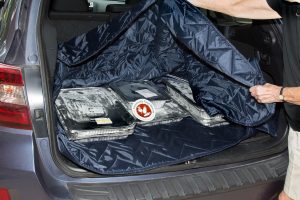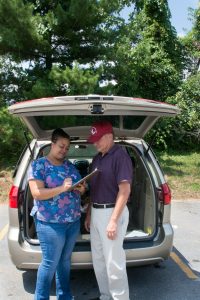Is This Food Safe to Eat?

How much do you know about food safety? Ever wonder whether that box of dried pasta dated 2015 in the back of your pantry is still good? What about that carton of eggs sitting in your refrigerator for a month? What about those bruised peaches? Should you buy a dented can of food for half price? Do you know the safe ways to defrost food? Test your knowledge with this fun online quiz. Enter code: 173320. You will get immediate feedback on your answers and see how you do compared to everyone else who takes the quiz. The quiz will be live until January 9, 2018.
These are some common questions about food safety in the home. For those of us engaged in food recovery, we also need to know all about how to safely package and label food left over after a catered event, best ways to transport frozen entrees in the middle of summer, whether fresh produce left in the sun after a farmers’ market is still good to eat, and whether a plate of cookies can be donated to a nearby shelter.

CFR volunteer food runners transport frozen food safely in summer with a thermal blanket.
In our first two years, Community Food Rescue has recovered 1.9 million lbs. of food that would have been thrown away. This food was redirected to food assistance organizations such as Gaithersburg HELP and Rainbow Community Development Center, which distributed it to their clients as groceries, or prepared into meals by groups such as Shepherd’s Table and Meals on Wheels Takoma Park. In whatever way food is delivered to people experiencing hunger, CFR members follow Food Safety Guidelines and protocols we co-created with the Montgomery County Department of Health and Human Services. These guidelines, developed specifically for recovered food, are especially important because the food may be eaten by people who have compromised immune systems, due to age, illness, or the stresses of poor nutrition.

CFR food runners track that food is handled safely throughout the food run.
CFR protocols for food safety include training and having our volunteer food runners learn the Food Safety Guidelines and pass the quiz before they are eligible to recover food. We use a paper tracking form that follows each food run and, if needed, records time- and temperature-sensitive foods. Food donors and recipients sign off on each food run that food has been handled safely. CFR publishes Food Safety brochures in seven languages, food safety videos, and Food Safety Guidelines on the food safety section of the CFR website.
So, how did you do on the quiz? Join us for the next FREE food safety webinar, Keeping Food Safe from Provider to Plate, on January 18, 2018, from 7-8:30pm. The webinar will cover food safety at home and for everyone engaged in food recovery. Food assistance provider staff and volunteers, and CFR volunteer food runners are encouraged to attend. This fun and engaging webinar will open your eyes to best practices when handling, preparing, transporting, and serving food. For more details and to register click here. If you can’t join us, sign up to receive a link to the recorded presentation.

